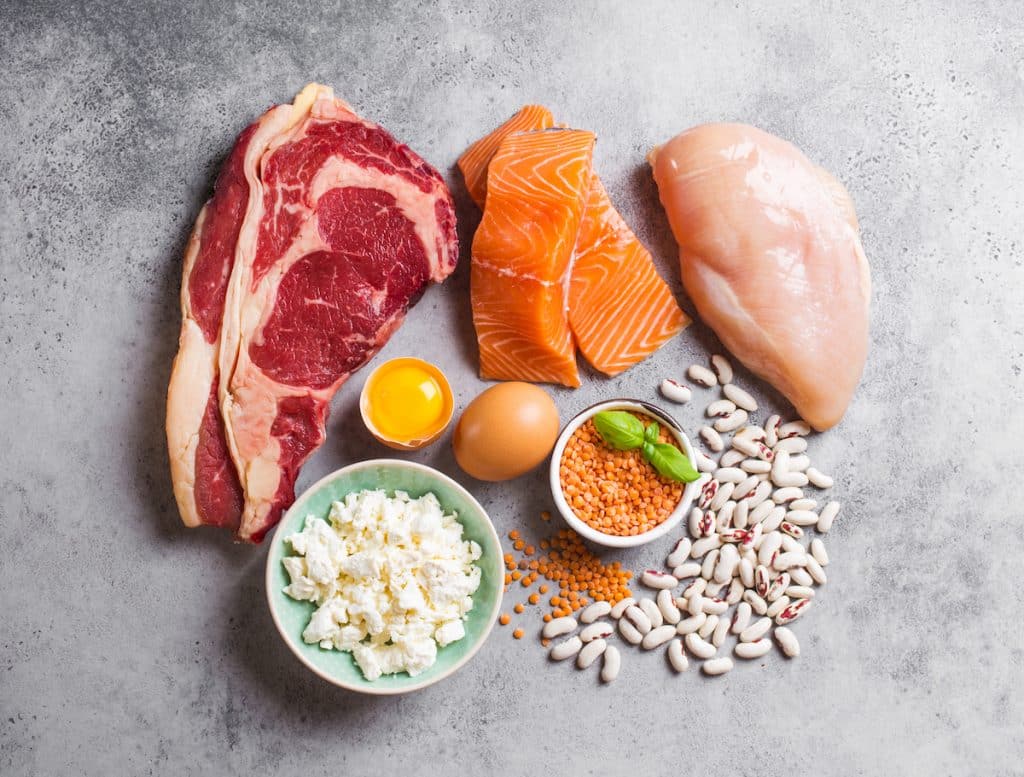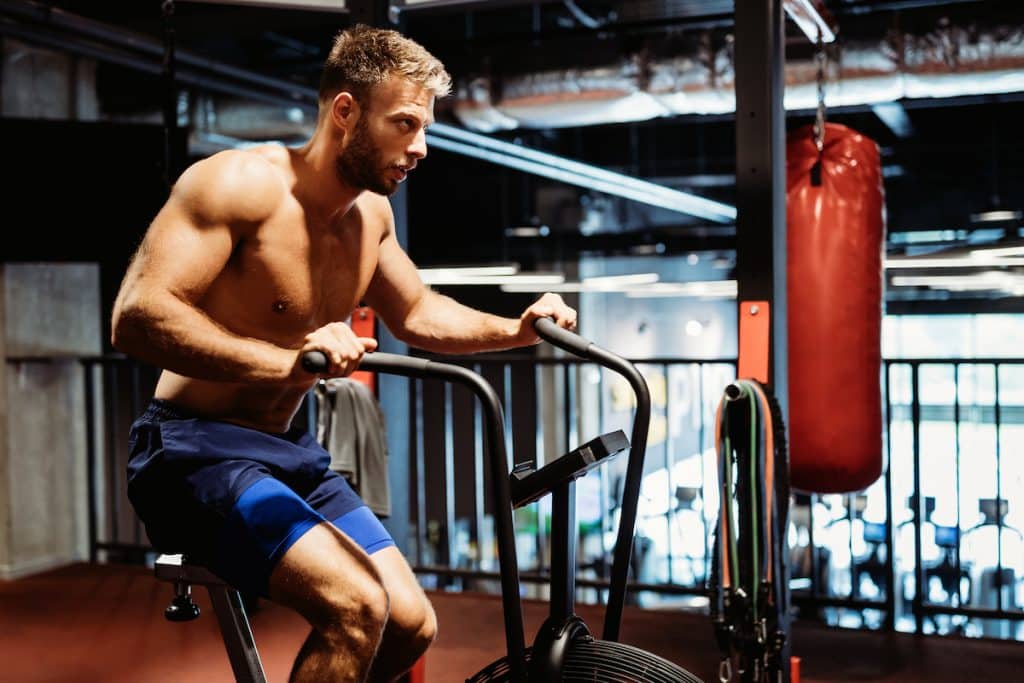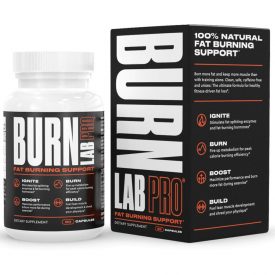Here is a guide to constructing the proper fat loss nutrition plan and training program.
You got blubber huh? Like, that soft squishy stuff tissue that eats at your insecurities. Wow, that escalated fast, but nonetheless, you clicked here to learn how to annihilate fat off your body for whatever reason. Let’s dive into a proper fat loss nutrition plan.
Whether, you got a few pounds or a few dozen pounds to lose, you came to the right spot. In this post we detail a fat loss nutrition plan and training program to get you to the new level.
It Starts With a Plan
Do you think the first man on the moon landed there by coincidence? No, of course not. Similarly, you’re not going to look like a shredded Greek statue by accident or by winging it. You need a plan.
I know that word is gross for some people because a plan requires well, planning. And I know some of you suck at planning or so you claim. You don’t suck at planning. You’ve just never done it before, so get the whole, “I suck at planning” mantra out of your head. It’s not that hard.
If you want any shot at trading your Shrek figure for a lean athletic body, you’ll need to practice planning and sticking to the plan. The consistency and intentionality is far more important than the exact X’s and O’s I’m about to teach you about nutrition and training.
So, with that being said, let’s talk about nutrition vs training.
Nutrition Vs Training
Many people like to pit diet against workouts. What’s even more annoying is that people will regurgitate dumb sayings like, “Nutrition is 90% of the battle bro.”
While I do think nutrition is more important for fat loss, but both are highly crucial. Nutrition simply creates a caloric deficit faster. For those who don’t know, a caloric deficit is when you eat fewer calories than you burn off over time. This is the underlying principle that must be present in any diet to produce fat loss.
So, as I was saying, nutrition can swing the balance of calories much more than training. In any given moment, you could eat a high calorie snack or big portion of food and slap on an easy 800 calories. With training, to burn off that same 800 calories takes hours of draining work.
If your nutrition is severely off, it can screw you in the short term. Missing a training day isn’t as impactful. Nonetheless, training helps you burn additional calories, improves your health, and ensures the weight you lose is fat and not muscle (if your training is optimized for this).
So nutrition may be slightly more important, but the key takeaway is you need both.
Nutrition Planning
So the base of your nutrition is your caloric intake. This plan assumes you know how to track macros or calories or are willing to learn. It really doesn’t take long to learn and any internet guide should suffice.
But anyways, staying within a certain caloric limit is key. If you eat too many calories, you won’t enter a caloric deficit, meaning you won’t be losing weight. This begs the question of how many calories you should eat? It depends on how many you burn. The more you weigh and the more active you are, the more you burn, thus allowing you to eat more than someone who burns fewer calories.
Generally speaking, most people can take their bodyweight and multiply by 10-13. Multiply it by 10 if you can barely get 8,000-10,000 steps per day. And obviously go to the higher end if you train and move frequently.
To make things more flexible, you can subtract and add 50 calories to this number. This gives you a range to aim for as opposed to one strict number.
Here’s an example. If you’re 160 pounds and are moderately active, you would multiply your bodyweight by 13.
160 x 12 = 1920
Your caloric range would be 1870-1970.
Macronutrients
Macronutrients refer to the infamous 3 nutrients protein, carbs, and fat. These nutrients are called macronutrients (macros for short) because they’re big nutrients as opposed to micronutrients which are small nutrients. Anyways, all 3 macronutrients contain calories. So every combination of macros results in a certain caloric intake.
If you can put 2 and 2 together, somebody who’s tracking macros is essentially tracking calories. As for what your macros should be, it’s far simpler than you think.
Many influencers and bros will have you believe there is magic within certain macros. I’ve even seen stuff on the internet telling you certain macros work better for certain body types. However, science completely disagrees. In fact, all the research points to the average person benefiting from a certain protein target and pretty much any reasonable fat to carb ratio.
So starting with protein, you want to hit at least 0.7-1 gram per pound of bodyweight. So a 160 pound person would aim for 112-160 grams of protein per day. 0.8 grams per pound of bodyweight is what research consistently finds all muscle building benefits max out at. So you can’t force-feed more protein for more muscle, although there is no detriment, so feel free to give it a try.
Anyways, set up your protein and aim to hit or surpass your protein target daily. As for fat and carbs, there isn’t any specific number you must have. Both are important to have, but you do not want too much in a fat loss nutrition plan.
Fat is an essential nutrient that ensures you have optimal testosterone production and nutrient absorption.
Carbohydrates are your primary fuel sources for high intensity exercise and glycogen replenishment. However, the less carbs you consume, the more fat you will burn. This is because when the body goes to use carbs as fuel and there are not enough there, it will burn fat as a replacement. This is why many fat loss nutrition plans involve low carb diets.
It is important to take in all of these three macronutrients, but in a fat loss nutrition plan it is more optimal to up your protein and cut back slightly on your fat/carb intake.
Food Choices of a Fat Loss Nutrition Plan
As for exact food choices, the enemy of fat loss is hunger. Hunger drives food consumption which raises your caloric intake. Hunger also cues your brain to seek pleasure or in simple terms, trigger cravings. So, learning to appease your hunger without spending too many calories is key to successful fat loss.
Enter the concept of energy density. Energy density refers to how many calories a food has relative to it’s volume. So ideally, you’d eat plenty of foods with a low energy density meaning they provide more volume while being low in calories.
Vegetables are the king of this. No food group outperforms veggies when it comes to energy density.
10 medium carrots are about 250 calories
1000 grams of zucchini is 170 calories
300 grams of spinach is 87 calories
Your stomach would explode before you could finish a fraction of the above food, but although your gut might feel full, the amount of storable energy you consumed is minor. That’s good news for your love handles.
In addition, the fiber and micronutrients from vegetables further enhance satiety and provide endless health benefits.
Other Ways to Suppress Hunger
Fruit is a close second to vegetables. Most fruits are low in energy density as well. Research finds eating fruit before or during the meal increases satiety and lowers the calories somebody will eat without even tracking.
In addition, you’ll have to fulfill your protein needs. Most protein sources are low in energy density as well, but only if they’re lean. Lean meaning there is minimal tag along carbs and fat. A few examples of this are chicken and turkey breast. This is rather obvious, but I still hear people saying almonds and chicken wings are good protein sources when they’re not. They’re fat sources. Fat in particular is the most energy dense macronutrient. It contains 9 calories per gram compared protein and carbs each only containing 4 calories per gram.
So think about something like a pork tenderloin vs strips of bacon. The pork tenderloin will provide more volume and protein for the same amount of calories while the bacon will provide less volume and fewer grams of protein.
So all this to say, your fat loss nutrition plan should consist mostly of lean protein, veggies, and fruit. Those are the non-negotiables. Beyond that, you can add starch, fat, and other types of food. They can still be beneficial.
Junk Food in a Fat Loss Nutrition Plan
In the case of junk food, you’re welcome to include that as well, but caution is warranted. A cheat meal is one thing, but continuing to eat junk could be bad. High calorie processed foods can still be incorporated in a fat loss nutrition plan to increase adherence and enjoyment, but if overconsumption of these occur, it defeats the purpose of including them.
For example, somebody having some donuts over the weekend or having a small bag of chips is no big deal. You can stay within a deficit pretty easily. But if your processed snack or dessert bite turns into a food fest that would impress professional eaters, you’re negating the deficit you’re attempting.
Training
Now, let’s talk about training. The goal of your training isn’t fat loss per se. The total deficit will take care of that, which as I mentioned earlier, is mostly influenced by nutrition. But again, training still serves a deeply important purpose. Primarily, training will impact your body composition.
So if you eat in a deficit, you’re guaranteed to lose tissue, but the deficit alone doesn’t guarantee solely fat tissue.
Fortunately, by lifting weights optimally, you can retain and even build muscle mass as you diet down ensuring the tissue you lose is only fat. After all, it’s great to lose weight, but only if that weight is fat tissue.
So anyone dieting needs to wrap around their heads that fat loss training is hypertrophy training. What builds muscle as a stand-alone training program will help retain muscle during a fat loss phase.
Cardio is cool to add more energy expenditure. It’s good for health as is strength training. But cardio alone or done disproportionately more than strength training is doing a disservice for optimal fat loss. You need training that stimulates muscle growth.
So lift hard and maximize all the training variables for hypertrophy. Hypertrophy training is fat loss training. Tattoo that into your brain.
Supplements in Your Fat Loss Nutrition Plan?
One thing worth discussing for a fat loss nutrition plan are supplements. There are a variety of supplements that are said to help with fat loss. Some of these include vitamin D, caffeine which can just come from pre-workout, and just plain fat burner supplements. While supplements will not do the work for you, they certainly can help accomplish your goals.
Burn Lab Pro is a great all-around fat burner with an innovative design and research-backed benefits. It is 100% natural, safe, and caffeine free giving you the best option on the market.
Overall, this is truly all you need in your fat loss nutrition plan. You need a deficit to ensure the laws of thermodynamics forces you into a smaller leaner frame. And you need to lift hard to ensure you keep that sexy hard looking muscle while the fat cells starves away.
You do that by planning your workouts and meals. Accumulate weeks and months and you’ll blast away much of the blubber you have. Don’t overcomplicate it past this.
Let us know what you think in the comments below. Also, be sure to follow Generation Iron on Facebook, Twitter, and Instagram.












